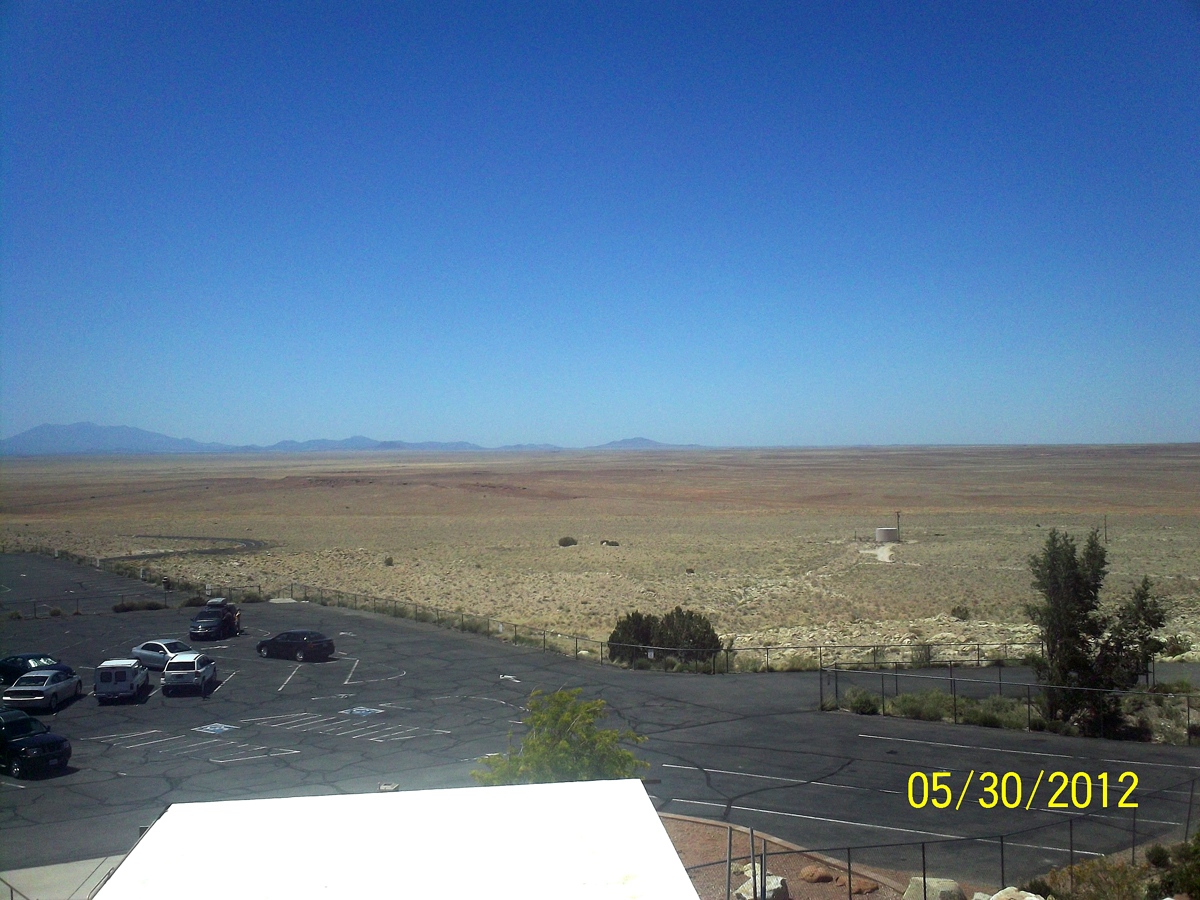
Barringer Meteor crater is probably the most widely known of all meteor impact craters on the Earth. It is also one of the most recent. It is located about 60km east of Flagstaff in Arizona. First studied in 1891, meteoric origin for the crater was first proposed by Daniel Barringer who formed a mining company and aquired the crater and surrounding property with the intention of mining the iron from the meteor that he believed to be buried under the crater. No such iron deposit was ever located and it is now believed that the meteor was vapourised by the impact. Numerous meteorite fragments have been found in the area. One of the largest of these, the Holsinger meteorite, is on display at the crater visitor's centre.
The crater is about 1200m across and about 170m deep. The rim is about 45m above the surrounding plain. Approaching the crater the first sign of the crater is a low, unimpressive rise in the distance.

View of the surrounding plain from the visitor's centre near the top of the rim.
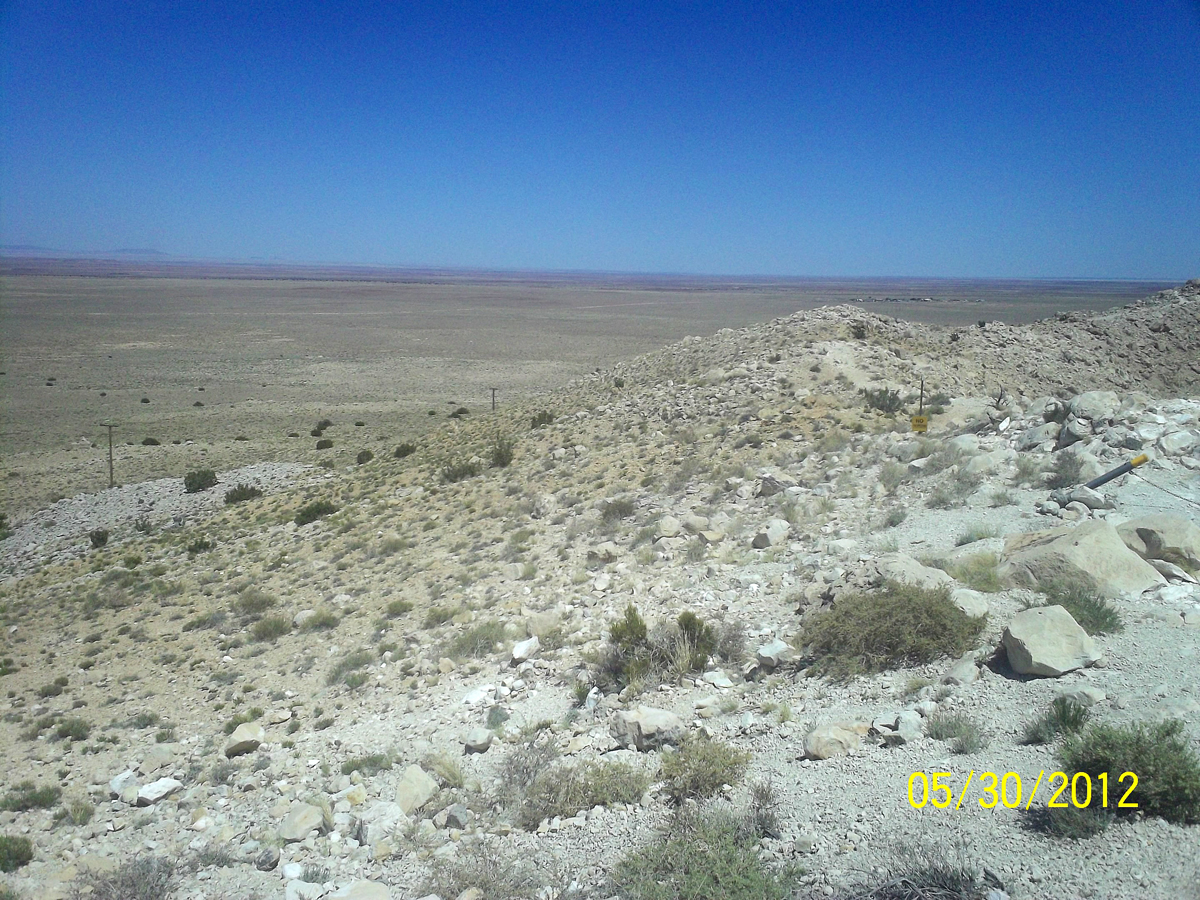
Looking eastwards from the top of the rim. Shattered rocks thrown out by the impact cover the area.
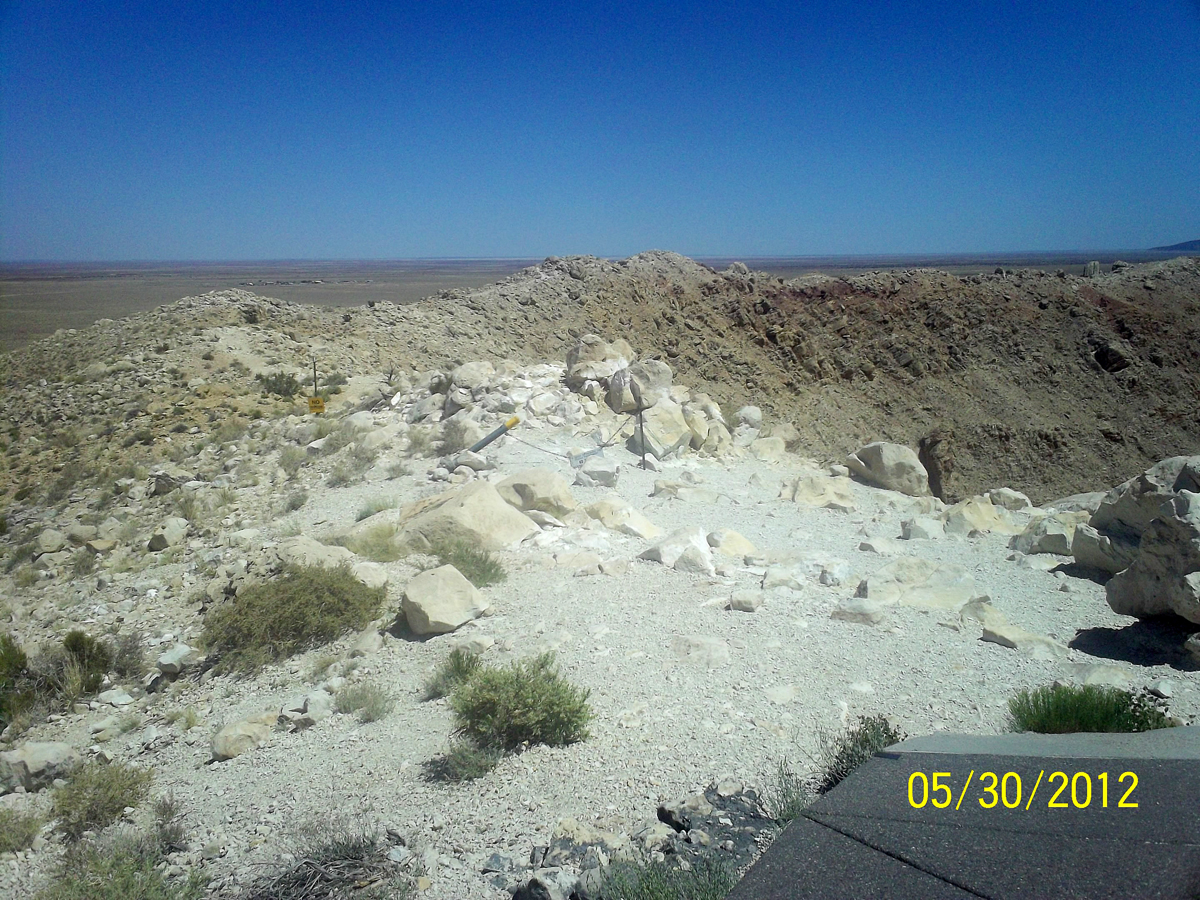
Looking eastwards from the top of the rim.
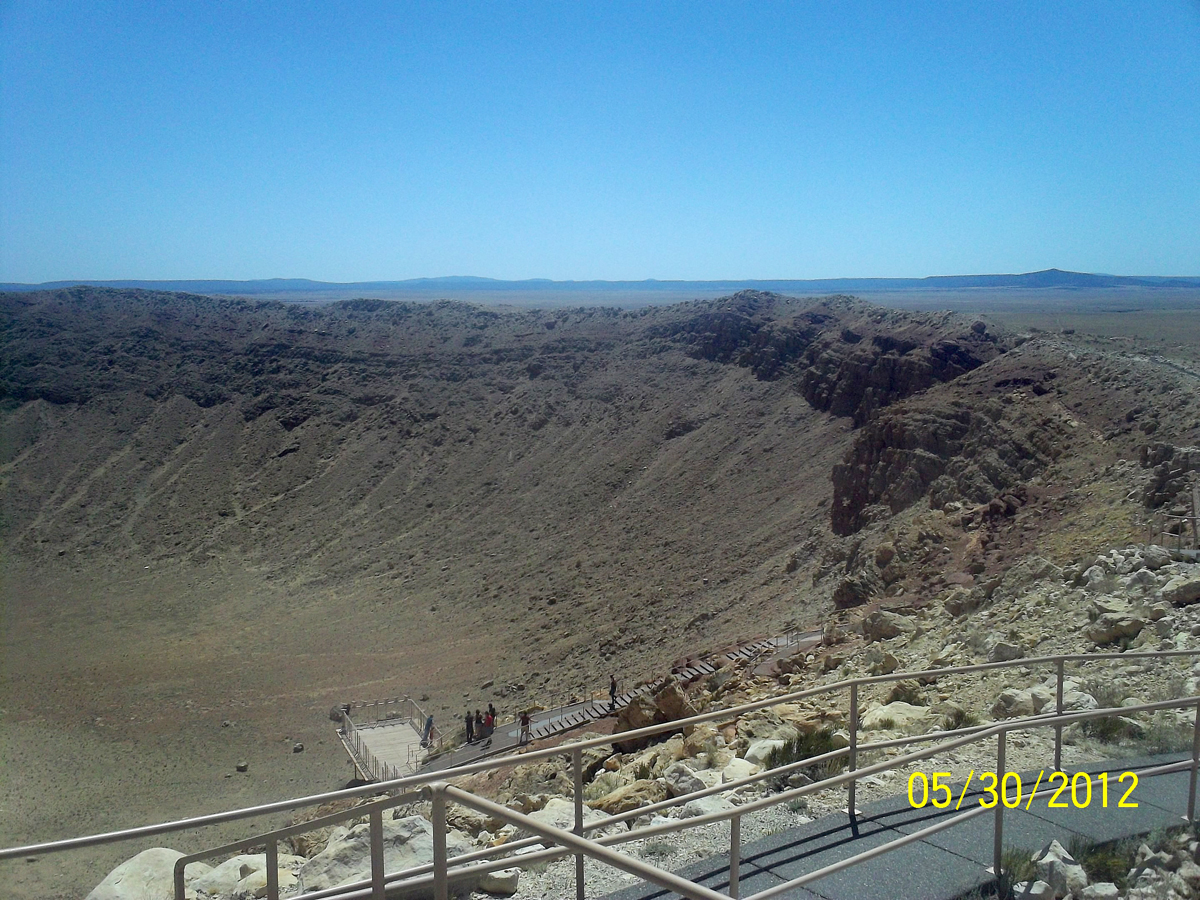
Looking eastwards from the top of the rim.
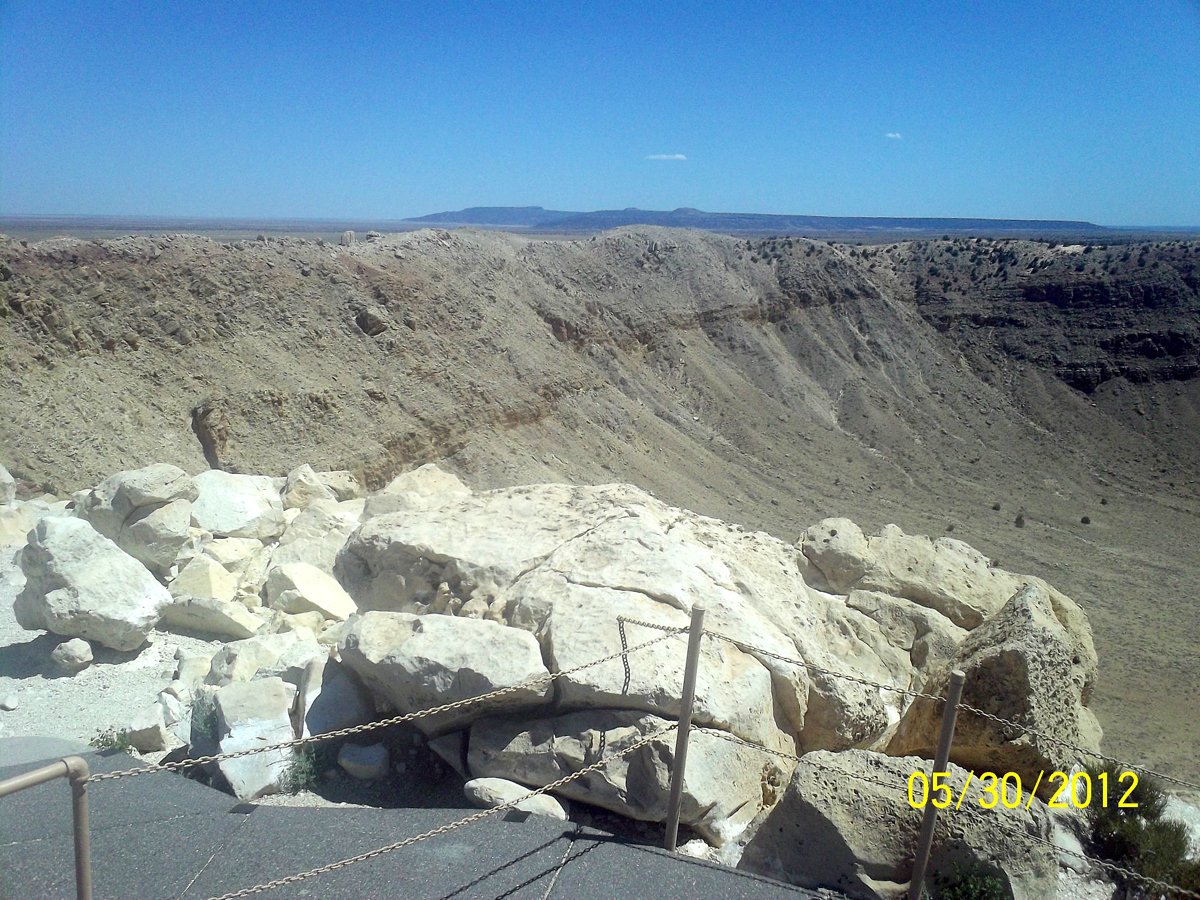
Coconino Sandstone at the top of the rim.
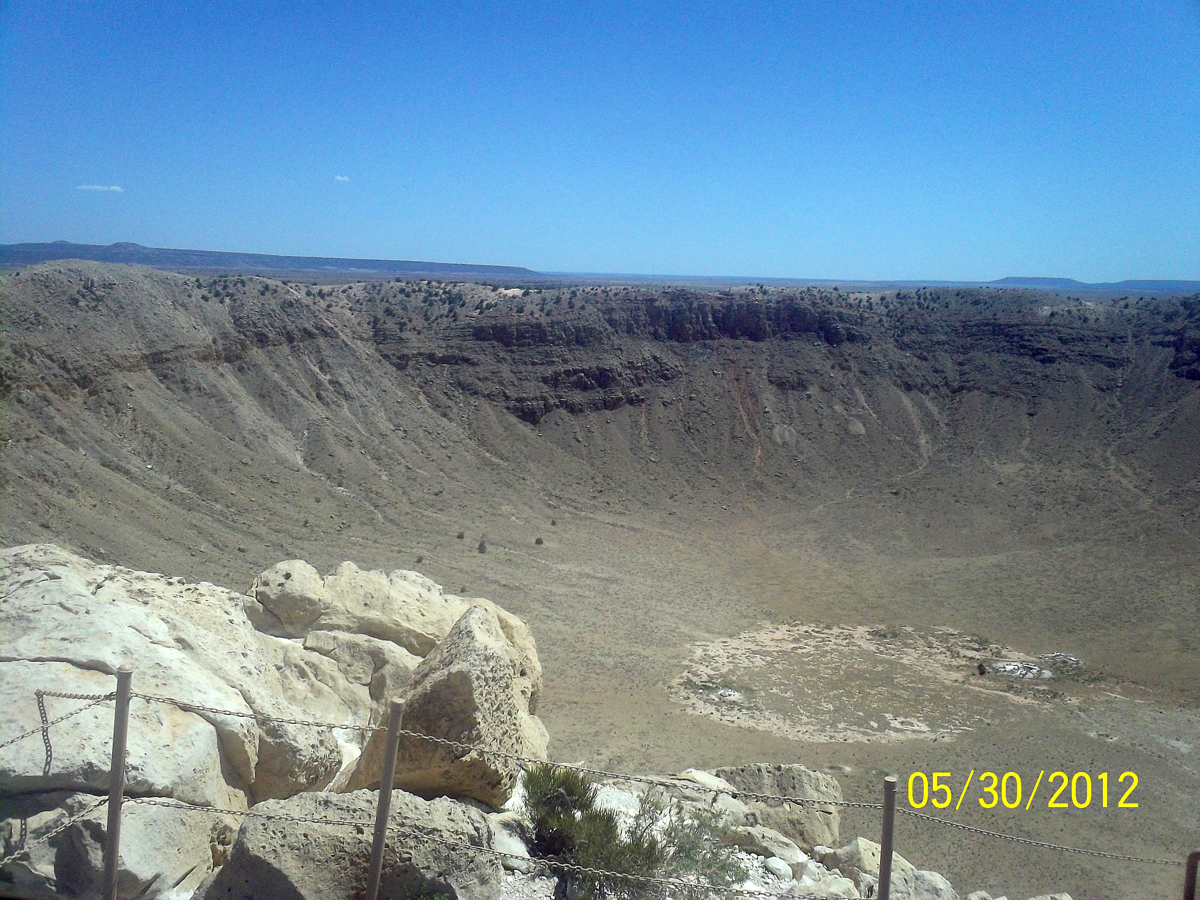
Once at the top of the rim, the view is fantastic! The rim falls away very steeply into a vast amphitheater that photographs cannot display in its magnificence.

Looking southwestwards at the top of the rim.
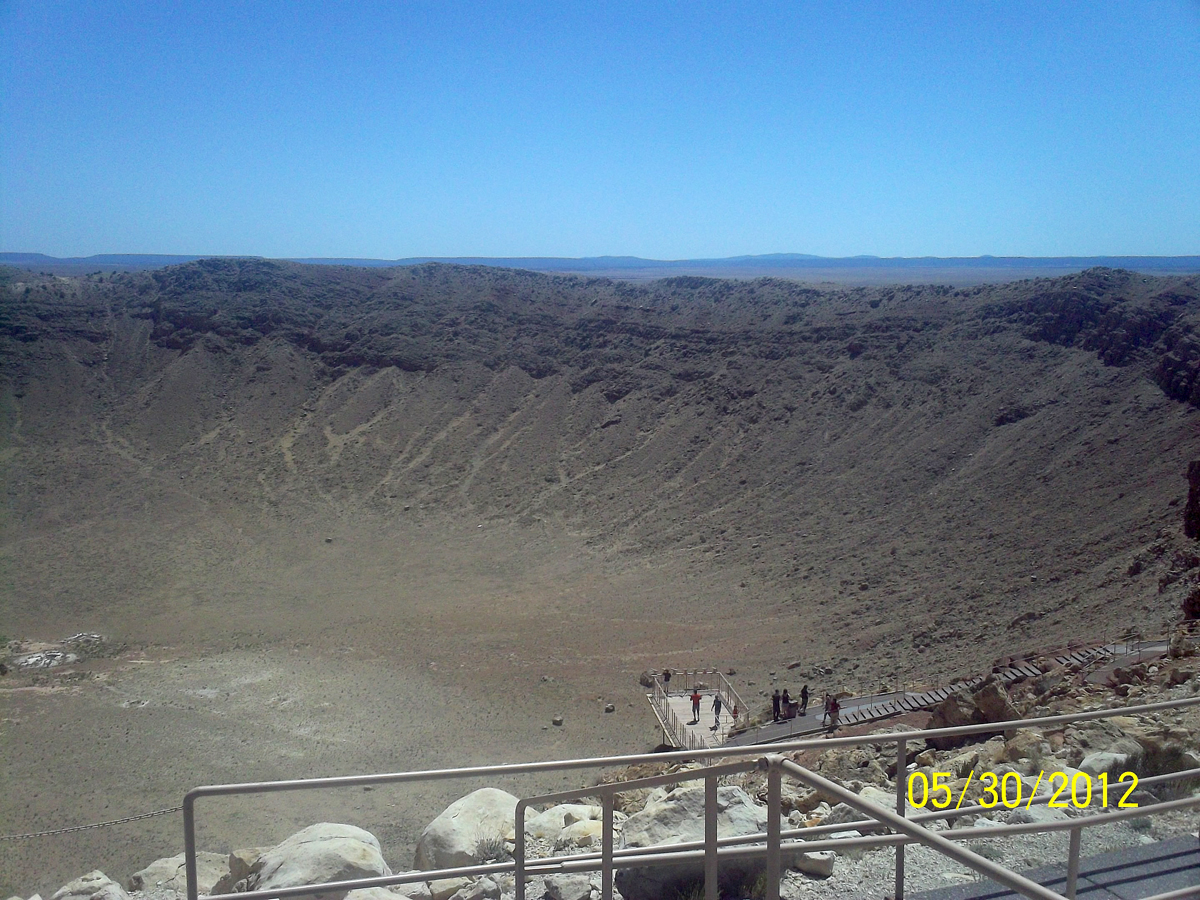
Looking southwestwards at the top of the rim.
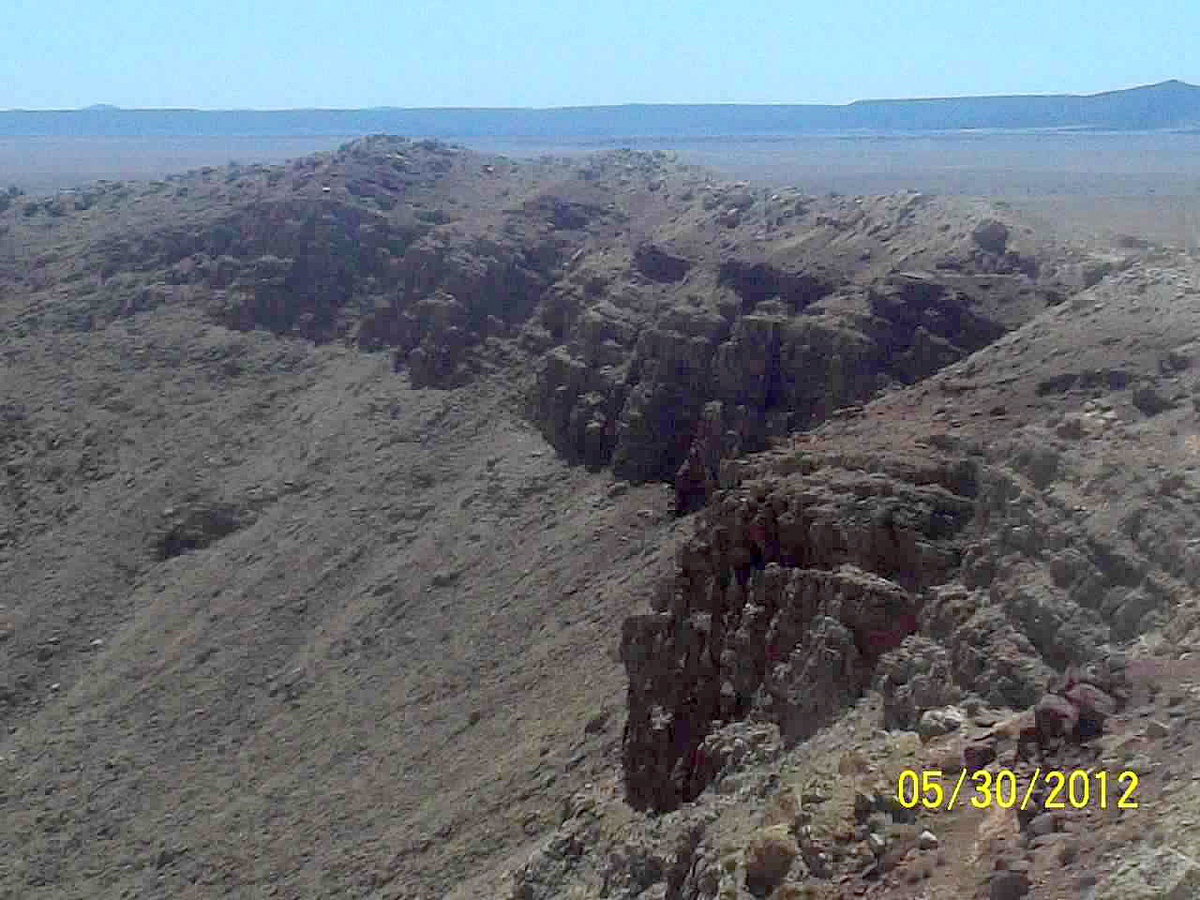
It is possible to take a guided walk along a section of the western portion of the rim. This is where some of the steepest sections of the crater wall are located.
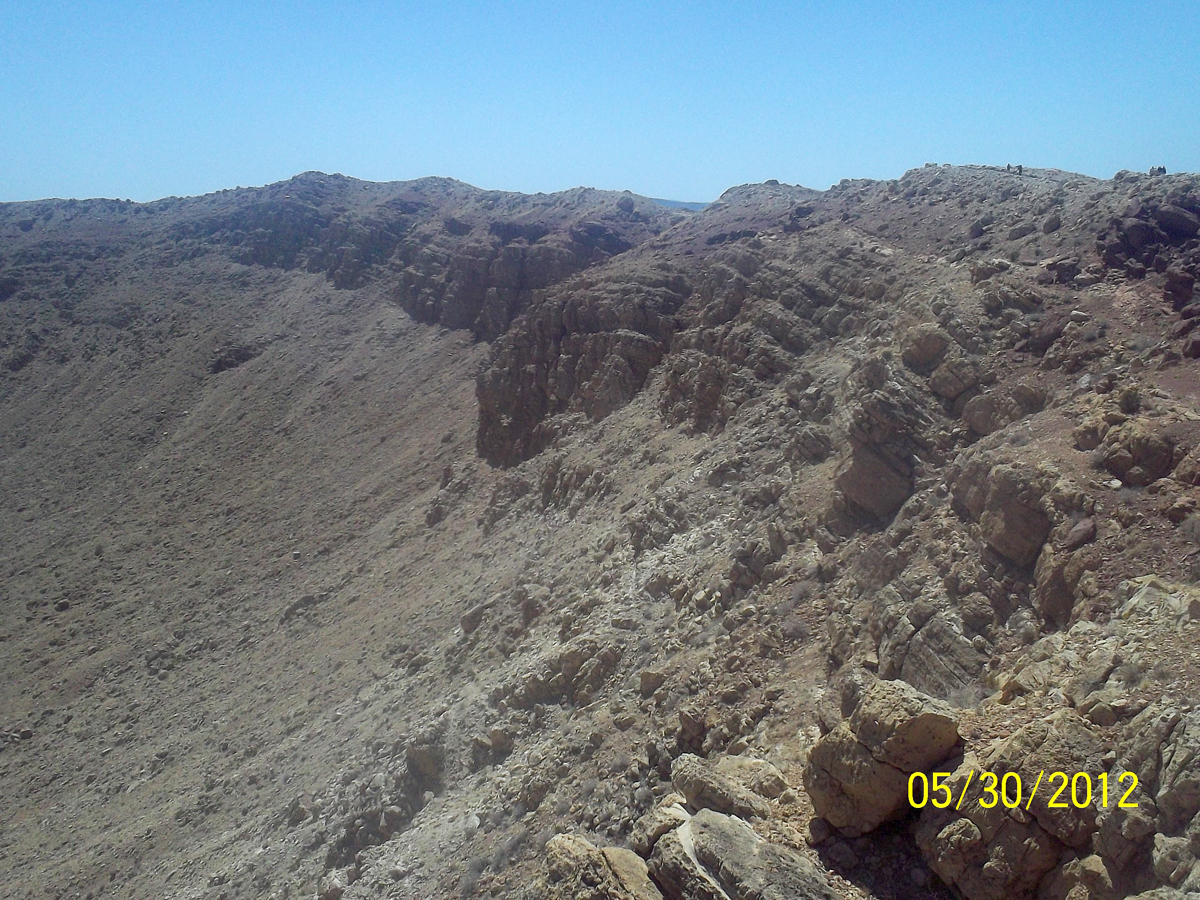
The western rim.
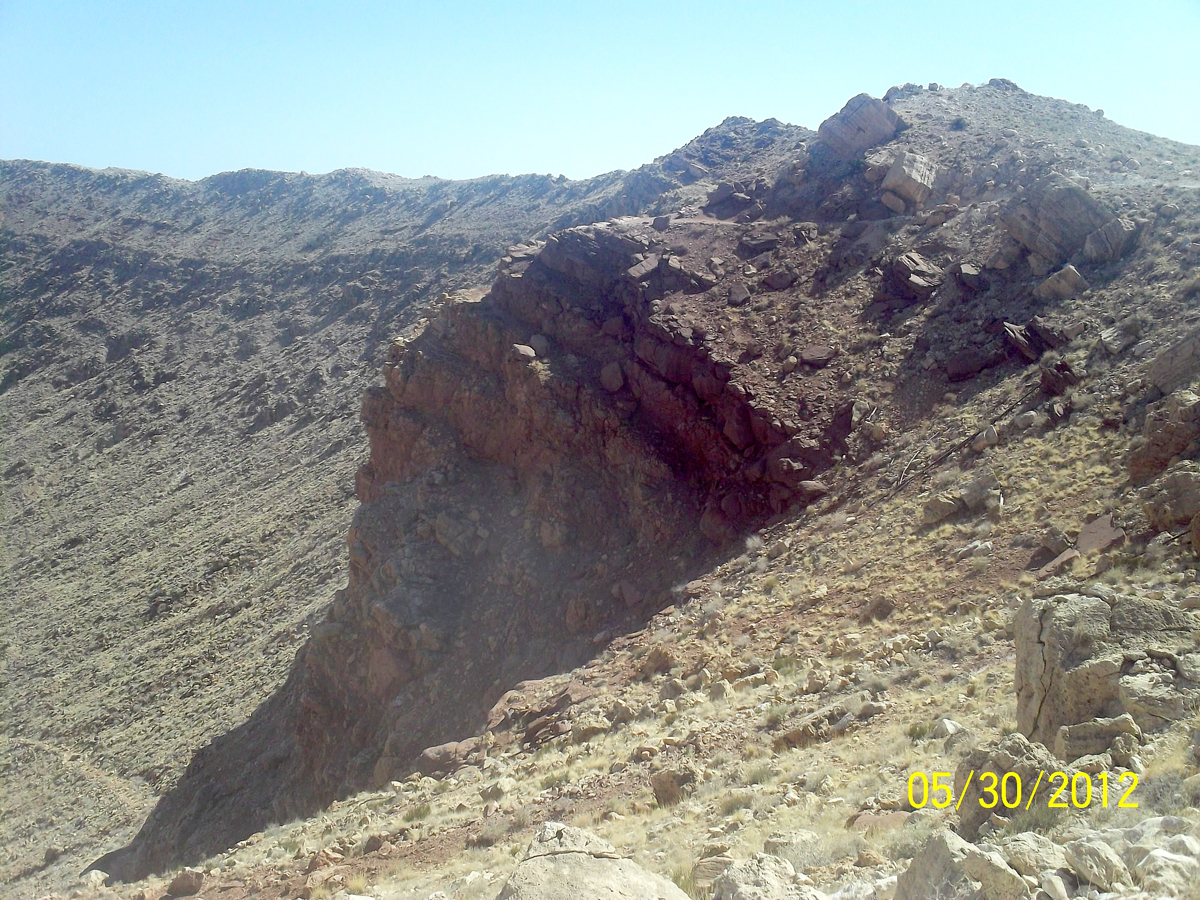
The western rim.
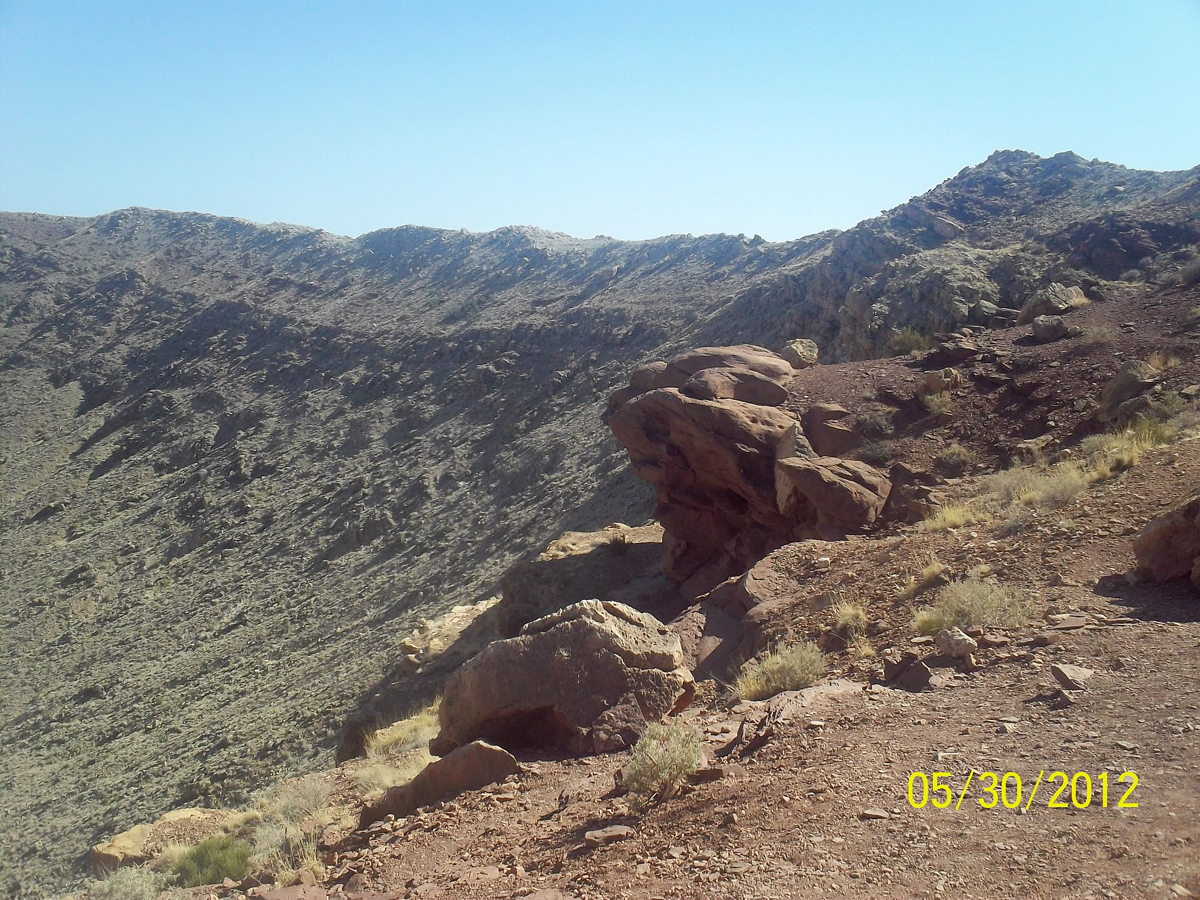
Huge blocks of shattered rock on the western rim.
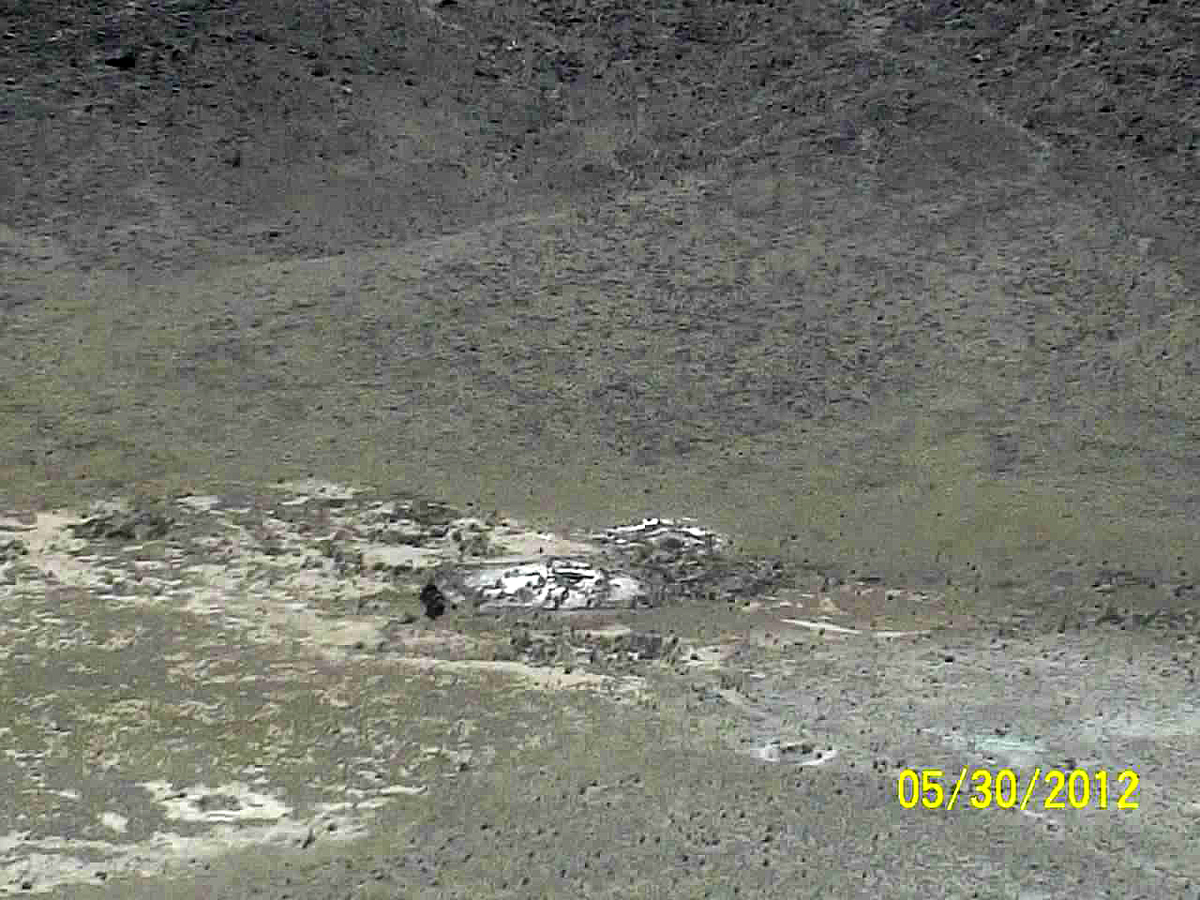
Located at the bottom of the crater are the remains of the mining attempts along with an astronaut cutout that commorates the Apollo astronauts who did part of their training at the crater. Also at the bottom of the crater is part of the wreckage of a light plant that flew into the crater in 1964 and which was unable to climb out and crashed.
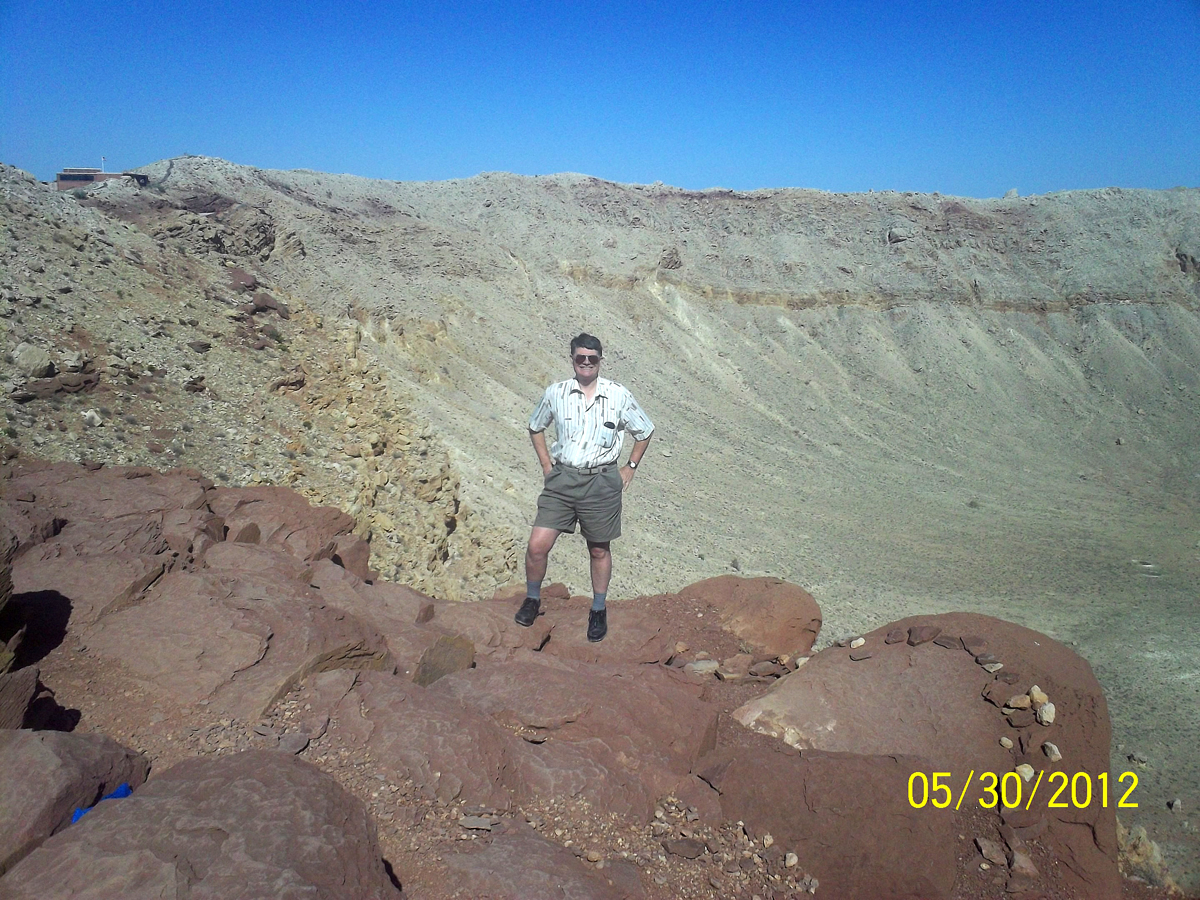
On the western rim, lookinig back towards the visitor's centre.
All in all it was a very interesting place to visit. However, after visiting such places as Wolf Creek, one thing I did find very distasteful was the crass commercialism of the place. I understand that the crater is privately owned and that the owners want to cash in, but to me the cost of entry and the limited amount of the crater that you could explore, did diminish the pleasure of the visit.